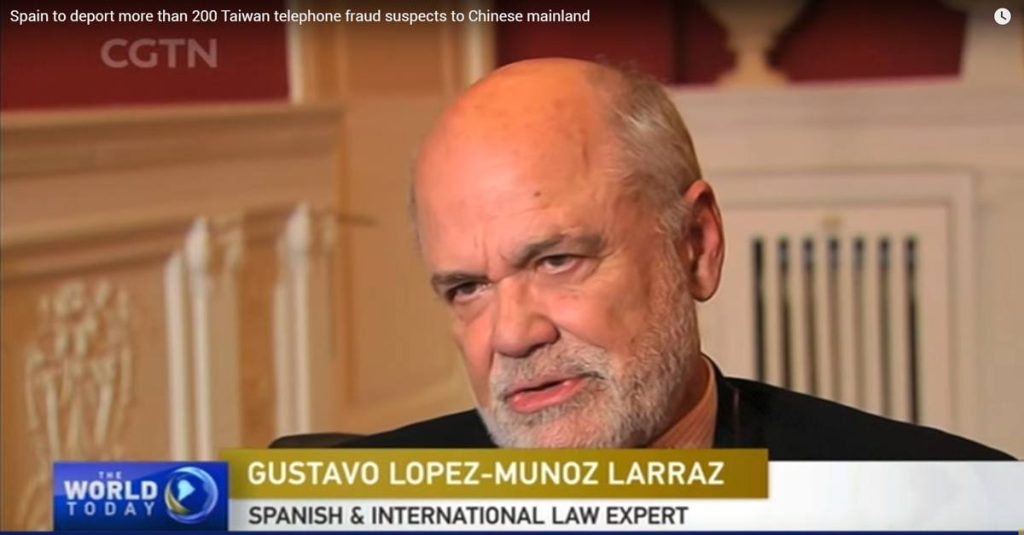Solutions to conflicts between business partners

The law does not offer solutions to conflicts between business partners nor does it include any regulations aimed at resolving these conflicts of interest between partners of a commercial entity, be it anonymous or limited, although it does contemplate different possibilities of ending the corporate relationship of the partners.
There are two main rules that regulate the rights and obligations of the participating partners of a company: The Capital Companies Law and the company’s Bylaws.
To these must be added those relating to tax and labor legislation to the extent that they affect the decisions made by the company itself or by its partners
Under corporate legislation, the options that exist to conclude the corporate relationship between the partners that constitute a company, are found in any of the following actions:
- Purchase and sale of shares or shares between partners.
- Splitting of the company.
- Liquidation of the company.
We study each of them separately in successive sections.
Purchase and sale of shares or shares
All partners have, by law, the same rights and obligations, except in those cases in which the law itself regulates a different regime. This is established both in the article on 94 of the Capital Companies Act:
“1. The social participations and the actions attribute to the partners the same rights, with the exceptions established under the protection of the law.”
Based on this principle, any right that one or several shareholders wish to exercise is limited, within the company, by the rights of others and , in return, the exercise of the same by the rest of the partners, in such a way that, any right or obligation that is affirmed for a partner is equally affirmed for the others. The degree of participation of each partner in the company, the number of shares that each one has, allows the game of majorities both in the decisions that are adopted and in the exercise of the rights on acquisition of shares.
The partners of a limited liability company, from the moment of the incorporation of the company, appear registered in the Registry Book that article 104 of the Law provides:
“1. The limited partnership will keep a Partners Registry Book, which will record the original ownership and the successive transfers, voluntary or forced, of the shares, as well as the constitution of real rights and other encumbrances on them.”
In the event of a possible discrepancy between the partners, the possibility of acquiring other partners’ shares or selling their own, makes it possible to reestablish the balance of majorities or to leave the company without the need to go to a liquidation of the company.
The decision of a partner to sell their share is strictly regulated by law, so that the rights of the other partners are not harmed and that all of them have, in proportion to their participation, the same right to acquire the shares for sale as the rest of the members of the company, in such a way that even
“1. The statutory clauses that make the voluntary transfer of company shares by acts inter vivos practically free will be null and void.” (article 108 LSC).
The Capital Companies Law establishes the free voluntary transfer of shares by inter vivos acts between partners, as well as those carried out in favor of the spouse, ascendant or descendant of the partner or in favor of companies belonging to to the same group as the transferor. Said freedom can be statutorily modified, limited or restricted in accordance with article 107 of the LSC.
If the partners of a company wish, therefore, to transfer the shares they own to each other, or if the transfer is between first-degree relatives, spouse or companies belonging to the same group of companies of the transferring partner, the transfer is free, unless the statutes establish otherwise.
It is possible that the company itself acquires the shares put up for sale. The variants in case of opting for this option are diverse.
According to the Law, it would be possible to document the operation through the purchase of securities by the company itself with a simultaneous capital reduction. In this way, the price would have to be paid by the company, and not by the partner or group of partners who remain in charge of the company. For the payment of the titles to the selling partner, the company can resort to the financial system. This implies an added advantage, since the financial cost of the operation would be an expense in its income statement and would be deductible in the liquidation of corporation tax.
Section of the company
A spin-off should be considered as a possible legal-corporate restructuring operation to end the existing corporate relationship.
By virtue of the division, the company’s equity is divided into two or more parts and the block transfer (universally) of one, several or all of these parties to one or more pre-existing or newly created companies. Depending on whether the total or partial assets of the company are split, we can talk about total spin-off and partial spin-off.
The total spin-off is characterized by the transfer en bloc of the entire business assets of the company that is split to two or more beneficiary companies. After the transmission of the entire patrimony, there is no patrimonial substrate, so the company is extinguished through the dissolution without liquidation of the same.
In the partial spin-off, one or more parts of the business assets are transmitted universally, in favor of one or more companies, . Since the entire assets are not transferred, the extinction of the company that is split does not take place. The company that is spun off retains part of its assets and is not extinguished.
The split must be approved by the General Shareholders’ Meeting and with a majority of two-thirds of the votes corresponding to the shares into which it is divided the share capital as provided for in art. 199 LSC.
Liquidation of the company
The dissolution and subsequent liquidation of limited liability companies is regulated in articles 360 et seq. of the LSC. Specifically the art. 364 contemplates the company dissolution by resolution of the general meeting. Said agreement can be adopted by a simple majority of partners in the case of Limited Liability Companies (art. 364 LSC).
Liquidation of the company is the least recommended formula. If the company is dissolved, all contractual relationships maintained with third parties (customers, workers, suppliers, financial institutions, etc.) would have to be resolved, with the consequent obligation to indemnify those who felt harmed by that measure.
The cost of the liquidation will depend on the circumstances of each company, and in general, the compensation to be faced against the workers of the staff is especially burdensome. According to art. 56 ET in the event of unfair dismissal the company must indemnify the dismissed workers by paying an amount equivalent to 33 days of salary for each year of seniority, prorating periods of less than one year, with a maximum of 24 monthly payments. In the calculation base it is necessary to include all the gross remuneration concepts that are paid to the employee, be they ordinary or extraordinary payments, bonuses, incentives, etc…
The dissolution of the company that owns the company does not imply the automatic termination of employment contracts. The art. 49.1 g ET determines that “In cases of extinction of the legal personality of the contracting party, the procedures of article 51 must be followed“, this precept that regulates collective dismissal.
Although art. 51 ET, contemplates a reduced compensation, it is required for this that there are causes that justify the collective dismissal of workers such as economic, technical, organizational, production or force majeure causes.
The fact that the partners voluntarily want to dissolve and liquidate the company does not in itself constitute a cause that justifies the dismissal of the entire workforce . In such a case, there would be no external force majeure that prevents the continuity of the company, but rather it would be a unilateral decision of the partners based exclusively on their will.
Custom Solutions
Each partner conflict deserves a detailed study to find the most appropriate solution. On many occasions, less orthodox solutions are found that are the most beneficial.
It should also be considered that in the event of a conflict between partners, the position of the minority partner is completely different from that of the majority partner, and therefore the strategy to be carried out will also be different.
There could be several examples in this regard, however and by way of example, in our article Solutions to partner conflicts: the right of separation We comment on the solution adopted for a client of this firm from his position as minority partner.
In that case, the exercise of the “right of separation” was considered the most appropriate, ultimately obtaining a tremendously beneficial result for the partner.
Conclusions
In view of what is stated in this study, the following conclusions are drawn:
First.- To end the partnership situation between two partners, or groups of participants, it is advisable to opt for the exit of one of the groups of partners by transferring their shares or by splitting the company into two different entities. The dissolution and liquidation of the company are not advisable.
Second.- If you opt for the concentration of all the social capital in only one of the partners or groups of partners, there are two alternatives. The transfer of shares from one of the groups to the other or the acquisition of shares by the company itself with the consequent reduction in capital.
Third.- The transfer of shares, between partners or in favor of the company, is the easiest and fastest way to end the corporate relationship. The most relevant tax consequences concern the tax that the resulting capital gains could have for the partners who transmit.
Fourth.- The possibility of transferring one hundred percent of the shares to a third party does not depend exclusively on the current partners but rather on locating a potential buyer. It must be considered, however, that this hypothetical buyer of the entire company may impose a non-competition agreement on the part of the transferors as a condition for the purchase. Although it depends to a large extent on the business sector, it is common for the buyer to require the active collaboration of the partners for a certain period of time to promote the full transmission and consolidation of the goodwill.
Fifth.- If you opt for the spin-off of the company, total spin-off may be recommended instead of partial spin-off to ensure, such as tax benefits , the non-taxation of capital gains by corporate and personal income taxes and the exemption from taxes related to the transfer of assets.
Sixth.- Considering the business activity developed and the types of products and services that are manufactured or marketed in the company, it will be more or less difficult define two different branches of activity that could be transferred to the respective beneficiary companies of said spin-off.
Seventh.- The division of the company into two companies would later allow, through the opportune exchange of titles, that each of the two groups of partners will remain the exclusive owner of one of the two companies resulting from the spin-off.



















